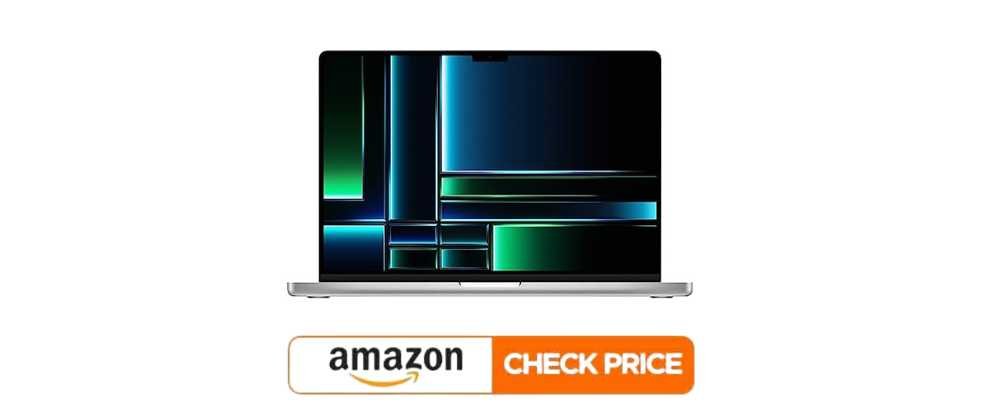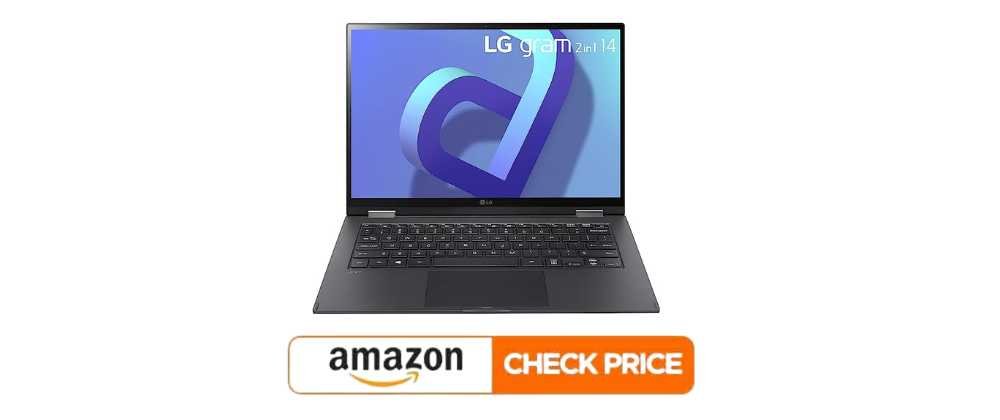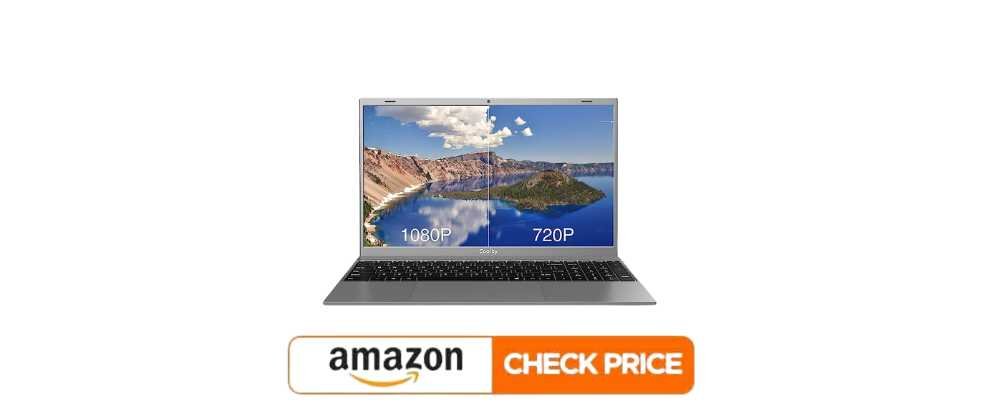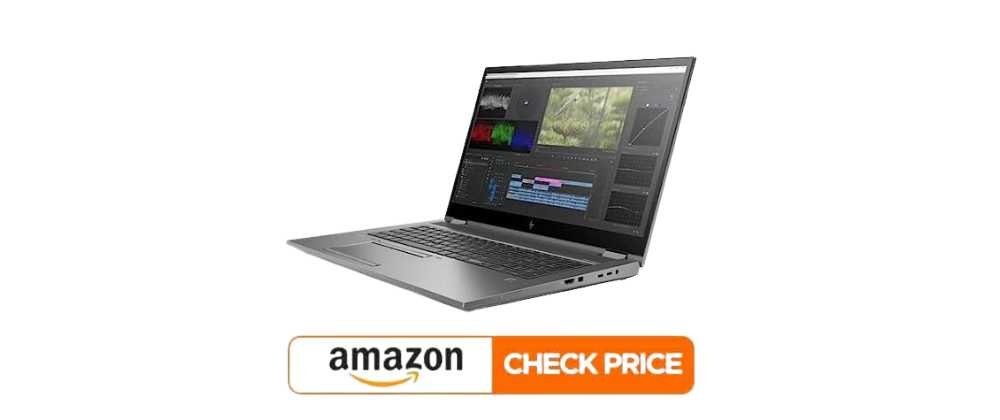Being a professional in graphic design and video editing, the Adobe Creative Cloud applications are an indispensable part of my toolkit. Tools like Photoshop and Illustrator aid in crafting print and web designs, while Premiere Pro and After Effects are pivotal for video editing tasks.
To maximise the potential of these advanced tools, particularly for intricate projects, it’s crucial to look for the best laptop for Adobe Creative Clout, These laptops come with exceptional performance that can accommodate my intense workflow.
Throughout my career, I’ve had the opportunity to evaluate and utilise several laptop models for operating Adobe Creative Cloud. Drawing on these experiences, I’ve shortlisted seven top-performing laptops for Adobe Creative Cloud in 2023. These selections offer an excellent combination of processing capability, display quality, and mobility.
Best Laptop For Adobe Creative Cloud: Buying Guide
For running Adobe Creative Cloud applications, here are the main features to look fo:
- CPU: Most Creative Cloud applications function optimally with an Intel Core i5 or AMD Ryzen 5 processor, or an equivalent. However, for demanding tasks such as video editing, 3D designing or rendering, opting for a more robust Core i7/i9 or Ryzen 7/9 processor is advisable.
- RAM: Target a minimum of 8-16GB of RAM for adequate performance, but for seamless multitasking and handling complex projects, a memory of 32GB or above is preferable.
- GPU: Certain Creative Cloud applications, notably Premiere Pro, After Effects, and Dimension, benefit from a dedicated graphics card. An NVIDIA GeForce GTX or RTX graphics card with at least 4GB memory suffices for the majority of tasks. However, for 3D modelling or intricate video effects, a graphics card of the calibre of RTX 2070 or higher is recommended.
- Storage: Get a laptop with at least a 256GB solid-state drive, preferably 512GB or more for fast loading of your software, files, and apps. HDD storage is slower but can be used for extra storage.
- Display: A 1080p or higher resolution display with accurate color reproduction (sRGB or Adobe RGB coverage) will provide the best visual experience for Creative Cloud. 4K displays are ideal, especially for video or graphics work.
- Operating system: The majority of Creative Cloud apps are optimized for Windows and macOS. Either platform would work well, so choose based on your own preference.
- Battery life: For working on the go, a longer battery life of 7-10 hours or more is useful. However, more powerful components may reduce battery life.
As we have explored the crucial factors that one should consider before buying the best laptop for Adobe Creative cloud, its time to dive in to explore our shortlisted deals.
How much should I spend for a good Creative Cloud laptop?
A: This depends on your needs, but in general:
- Casual/hobby use: $700-$1,500 – Will run most Creative Cloud apps for essential work, light-duty.
- Professional freelance use: $1,500-$3,000 – Powerful enough for daily pro-level editing, design and content creation.
- Professional power use: $3,000-$5,000+ – High-performance for intensive video editing, 3D, VR and advanced graphics. Worth the investment for maximum capability and productivity.
Additional budget for upgrades: Adding more RAM, storage, a better graphics card or larger display will increase the price. But can be worth it for performance.
Best Laptops for Adobe Creative Cloud: Detailed Reviews
1. DQ160S Laptop
An inexpensive yet capable laptop, the DQ160S is equipped with an 11th Gen Intel Celeron N5095 processor, 12GB RAM, and a 512GB SSD. The tall 16:10 2.5K display offers extra vertical screen space that’s useful for graphic design and editing photos.
While the integrated Intel UHD Graphics isn’t the fastest, it can still handle basic to mid-level graphics and photo work in Creative Cloud. For casual use of apps like Photoshop, Illustrator, or InDesign, the DQ160S provides solid performance for a budget-friendly price.
2. Microsoft Surface Laptop Go
For basic to mid-level Creative Cloud use, the Surface Laptop Go provides good value. It comes with a 10th Gen Intel Core i5 processor, 8-16GB RAM, and either 128GB or 256GB of storage. The 12.4-inch PixelSense touchscreen display offers a crisp image with accurate colors. Weighing just 2.45 pounds, the Surface Laptop Go is nicely portable and has an excellent keyboard and touchpad.
While not the most powerful laptop, the Surface Laptop Go handles essential Creative Cloud apps like Photoshop and Illustrator capably for small to medium-sized projects. For casual designers and hobbyists, it would work great as an affordable Creative Cloud companion.
3. Apple 2023 MacBook Pro (M2 Pro, 10-core)
The new 2023 MacBook Pro is a powerhouse optimized for graphics-intensive tasks. It features Apple’s latest M2 Pro chip with a 10-core CPU and 16-core GPU, delivering performance up to 70 percent faster than the previous model. The Liquid Retina XDR display is gorgeous, with extreme dynamic range and truly vivid colors.
For me, the 10-core MacBook Pro strikes the perfect balance of performance and portability. It has become my go-to machine for running Photoshop, Illustrator, and Premiere Pro on the move.
4. Apple 2023 MacBook Pro (M2 Pro, 12-core)
If you need even more performance, the 12-core MacBook Pro should be at the top of your list. The M2 Pro chip provides over 90 percent faster speeds compared to an Intel-based MacBook Pro with an octa-core processor. The extra CPU and GPU cores make a noticeable difference when editing high-resolution videos or working with 3D effects in After Effects.
The larger 16.2-inch Liquid Retina XDR display is ideal for graphics and video work, with its ample screen real estate and stunning image quality. For the most demanding Creative Cloud users, the 12-core MacBook Pro is a creative powerhouse like no other.
5. LG gram (2022) 14T90Q 2-in-1 Tablet Laptop
A highly versatile option, the LG gram (2022) can switch between being a traditional laptop and touchscreen tablet. It features the latest 12th Gen Intel Core i7 processor, 16GB RAM, and a 512GB SSD—more than enough performance for most Creative Cloud apps.
The 14-inch 1080p IPS display covers 100% of the sRGB gamut for true-to-life colors. Weighing under 1kg, the LG gram is also extremely portable. If you’re looking for a 2-in-1 power laptop for graphic design and casual video editing, the LG gram would be an excellent choice.
6. 2023 Coolby Laptop
If you’re on a tight budget, the 2023 Coolby Laptop is worth considering. It features an Intel Celeron N4120 processor, 12GB RAM, and a 256GB SSD, enough for running basic Creative Cloud apps. The 15.6-inch 1080p display is fairly sharp and color accurate. Since it lacks a dedicated graphics card, the Coolby Laptop won’t handle video editing or 3D rendering well.
However, for simple photo editing, digital drawing, and web design, it provides good performance for the money. For casual or hobby use of Creative Cloud on a budget, the Coolby Laptop is an option to consider.
7. HP ZBook Studio 17 Laptop
For professional designers and editors who want maximum performance, the HP ZBook Studio 17 is a creative powerhouse built for intensive graphics work. Featuring an Intel Xeon or Core i9 processor, 32-64GB RAM, NVIDIA Quadro RTX 5000 graphics, and a 17.3-inch 4K DreamColor display with 100%
Adobe RGB coverage, this workstation laptop plows through even the most demanding Creative Cloud tasks. Although expensive, the ZBook Studio 17 is an investment that provides professional-level performance for years to come. For serious video editors, 3D modelers, and VR designers, this should be at the top of your wish list.
In summary, when choosing a laptop for the Adobe Creative Cloud, consider how you will use the applications and your performance requirements. From basic to professional use, the options in this guide provide a range of capabilities to meet your needs. For photographers, casual designers, and hobbyists, a mid-range laptop like the MacBook Air, Surface Laptop Go or LG Gram would work great.
For graphics professionals, video editors, and 3D artists, a high-performance workstation like the MacBook Pro or ZBook Studio 17 is the best choice. With the ideal Creative Cloud companion, you’ll be empowered to bring your creative visions to life.
What are the Recommended Features of a laptop for 3D modeling in Adobe Creative Cloud?
For 3D modeling and rendering in Adobe Creative Cloud applications like Dimension and Photoshop, I would recommend a high-performance laptop with the following specifications:
-
- A fast CPU, ideally an Intel Core i7 or i9 processor or AMD Ryzen 7/9. These high-end CPUs have enough power for complex 3D modeling and rendering.
- A dedicated GPU, such as an NVIDIA GeForce RTX 2070 or better. 3D modeling and rendering are very graphics intensive, so a powerful GPU is essential. RTX GPUs are well optimized for creative apps and will significantly accelerate your 3D workflow.
- At least 16GB of RAM, preferably 32GB or more. 3D modeling can require a lot of memory, especially when rendering high polygon scenes. More RAM will allow you to work with large 3D files and many applications open simultaneously.
- A high-resolution display, preferably 4K. A 4K display provides enough screen real estate and detail for precise 3D modeling and editing. Look for a display with 100% Adobe RGB or DCI-P3 color gamut coverage for the most accurate colors.
- Fast solid-state storage. An SSD will load your 3D modeling software, assets, and files much faster than a hard disk drive. Look for at least a 512GB SSD, preferably 1TB or more.
- Optional touchscreen. A touchscreen can provide more intuitive control over the 3D viewport and models. It really depends on your personal preference, as a keyboard and mouse/stylus can also work very well.
Is there a way to optimize my laptop’s performance for Creative Cloud apps?
Yes, there are several ways to optimize your laptop’s performance for Adobe Creative Cloud applications:
- Make sure you meet the minimum system requirements for all the Creative Cloud apps you want to use. For the best experience, exceed the minimum specs, especially for the CPU, RAM, graphics and storage.
- Choose a laptop with a fast SSD for your primary storage. An SSD loads apps, files and media much faster than a hard disk drive. For pro use, get at least 1-2TB of SSD space.
- Increase your RAM to at least 16-32GB for good performance or 64GB and up for the best performance . More RAM allows you to run multiple apps simultaneously and work with larger files smoothly.
- Choose a laptop with a dedicated graphics card, especially for resource-intensive apps like Premiere Pro, After Effects or Dimension. For most pro use, an NVIDIA RTX 2070 or better is a good choice. RTX cards accelerate many Creative Cloud features.
- Make sure you’re running the latest updates for Windows, macOS and all your Creative Cloud apps. Updates often include performance enhancements and fixes.
- Limit background apps and browser tabs when using Creative Cloud. More resources dedicated to the apps you’re running means better performance.
- If editing or rendering large video files or 3D scenes, create proxys or use a lower preview resolution. This reduces the load on your system until final output.
- Consider using an external drive array via Thunderbolt 3 to add more fast storage. This provides more bandwidth and space for working with massive media files, especially when editing or rendering in 4K and above.
- On Windows, adjust advanced power settings for maximum performance. Make sure cooling features like fans can properly circulate air to avoid overheating and thermal throttling.
- Consider adding a desktop eGPU with a powerful graphics card for intensive work or when faster performance is needed. Uses your laptop’s Thunderbolt 3 port to connect a dedicated external GPU.
- For the best performance, keep your laptop plugged in. Running on battery power alone may reduce CPU and graphics performance to save energy.
Optimizing your setup for the best balance of performance and portability will allow you to work as efficiently as possible with all your Creative Cloud apps.
Frequently Asked Questions:
Q.What processor do I need for running Creative Cloud apps?
A: For most Creative Cloud apps, a current-generation Intel Core i5 or AMD Ryzen 5 processor or better is good. For video editing, 3D design or rendering, Core i7/i9 or Ryzen 7/9 processors are recommended. More powerful CPU options like the Xeon or AMD Threadripper are best for intensive professional work.
Q: How much RAM do I need?
A: For optimal Creative Cloud performance, go for at least 16-32GB of RAM or more. Video editing, rendering, 3D modeling and advanced effects work will benefit from even more at 64GB or higher.
Q. Do I need a dedicated graphics card?
A: For apps like Photoshop, Illustrator or InDesign, integrated graphics can work for basic tasks. But for Premiere Pro, After Effects, and Dimension, a dedicated GPU is important. For most uses, an NVIDIA GeForce RTX or Quadro RTX graphics card with at least 4-6GB of memory is good. Higher-end options like the RTX 2070 or better are best for intensive 3D, video editing or VR design.
Q: How much storage space do Creative Cloud apps take up?
A: The base Creative Cloud app bundle requires around 50-100GB of space. Then count the additional space needed for your files, projects, media, and local app storage. 1-2TB is a good amount for most professional use. Faster solid-state drives are highly recommended.
Q: What screen size and resolution do I need?
A: A larger screen of 15 inches or bigger is good for design work. For high resolution editing and video, choose a 4K display. Look for accurate colors with at least 100% sRGB and ideally Adobe RGB coverage. Touchscreens and stylus support are useful for some. 2-in-1 models with tablet modes also provide more flexibility.







